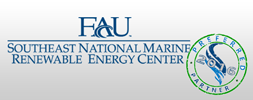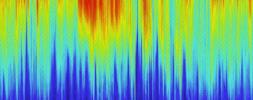The SNMREC Preferred Partner Program is an opportunity for our industry partners to collaborate more fully with the Center. This program is designed to dedicate SNMREC experts and resources to individual industry partner development needs.
Publication TR-12-003
Reference: VanZwieten, J.H. Jr., M.G. Seibert, and K. von Ellenrieder, 2012: Anchor selection study for ocean current turbines. SNMREC-TR-12-003, Southeast National Marine Renewable Energy Center, Florida Atlantic University, 45 pp.
Abstract: This paper compares anchoring systems suitable for ocean current turbines, specifically those proposed to be installed off the coast of Southeast Florida near latitude 26° 5’ N. This location boasts an ocean current resource with a mean kinetic energy flux of approximately 2.34 kW/m2. Bottom types ranging from unconstrained sediment to high relief ledges were observed during regional benthic surveys and therefore the performance of deadweight, plate, pile, and drag embedment anchors are compared. Numerical simulations of single point moored marine hydrokinetic devices were used to extract anchor loading at two theoretical deployment locations, mooring scopes from ranging 1.25 to 2.0, and turbine rotor diameters between 3 and 50 m. These anchor loading data were used for preliminary sizing of deadweight and driven plate anchors on both cohesionless and cohesive soils. For all evaluated scenarios, a 14 kN deadweight anchor with no shear keys is sufficient for holding a turbine with a rotor diameter of 50 m and plate anchors can also support these same loads if adequate sediment depths exist. Finally, the capabilities of drag embedment and pile anchors relevant to ocean current turbines are discussed. Multiple types of drag embedment anchors can support all of the predicted loads if adequate sediment exists and the loading is horizontal, while pile and H-type anchors can support all of the evaluated loading scenarios and chain-in-hole anchors can support turbines with rotor diameters up to 30 m.



